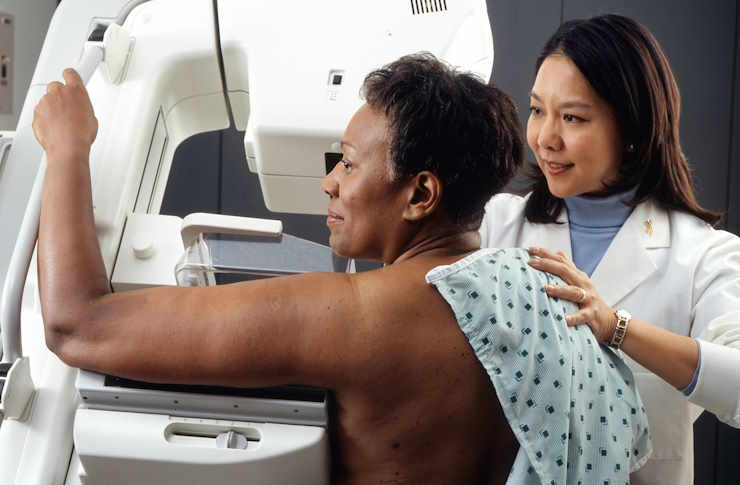Understanding the Side Effects of Ductal Carcinoma Surgery: What Patients Need to Know
Ductal carcinoma surgery is a pivotal treatment for breast cancer, yet it brings a range of potential side effects that patients should anticipate. Common issues include post-operative pain, changes in breast appearance, and the risk of swelling and lymphedema due to lymph node removal. Additionally, the emotional and psychological impact can be profound, with feelings of anxiety or depression often surfacing during recovery.

Ductal carcinoma, particularly invasive ductal carcinoma, is one of the most common types of breast cancer. Surgical intervention is often a primary treatment option, ranging from lumpectomy to mastectomy depending on the stage and grade of the cancer. While surgery can be life-saving, it is important for patients to understand the potential side effects and complications that may arise during recovery.
What is the Root Cause of Ductal Carcinoma
Ductal carcinoma originates in the milk ducts of the breast. The exact root cause is not fully understood, but several risk factors have been identified. These include genetic mutations such as BRCA1 and BRCA2, hormonal influences, age, family history, and lifestyle factors like obesity and alcohol consumption. Invasive ductal carcinoma occurs when abnormal cells break through the duct walls and invade surrounding breast tissue. Early detection through mammograms and biopsies is crucial for effective treatment. Understanding the underlying causes can help patients and healthcare providers tailor prevention strategies and treatment plans.
Ductal Carcinoma in Situ Diagnosis
Ductal carcinoma in situ, or DCIS, is considered a non-invasive or pre-invasive form of breast cancer. It is often detected through routine mammography as it typically does not present symptoms. Diagnosis involves imaging tests such as mammograms and ultrasounds, followed by a biopsy to confirm the presence of abnormal cells confined within the milk ducts. DCIS is highly treatable, and early diagnosis significantly improves outcomes. Treatment options may include surgery, radiation therapy, or hormone therapy depending on individual circumstances. Regular screening is essential for early detection, especially for individuals with a family history of breast cancer.
Stage 1 Grade 1 Invasive Ductal Carcinoma Treatment
Stage 1 Grade 1 invasive ductal carcinoma represents an early-stage cancer where the tumor is small and has not spread extensively. Treatment typically involves surgical removal of the tumor through lumpectomy or mastectomy, depending on tumor size and patient preference. Following surgery, adjuvant therapies such as radiation, chemotherapy, or hormone therapy may be recommended to reduce the risk of recurrence. The prognosis for Stage 1 Grade 1 invasive ductal carcinoma is generally favorable, with high survival rates when treated promptly. Treatment plans are personalized based on factors like tumor characteristics, patient age, and overall health.
Common Side Effects Following Ductal Carcinoma Surgery
Surgery for ductal carcinoma can result in several side effects that vary in severity and duration. Common immediate side effects include pain and discomfort at the surgical site, swelling, bruising, and fatigue. Patients may experience numbness or tingling in the chest, underarm, or arm due to nerve damage during surgery. Seroma, a collection of fluid at the surgical site, is another frequent complication that may require drainage. Infection is a risk with any surgery, and patients should monitor for signs such as redness, warmth, or discharge. Most of these side effects are temporary and can be managed with pain medication, rest, and proper wound care.
Long-Term Side Effects and Complications
Beyond the immediate recovery period, some patients may experience long-term side effects from ductal carcinoma surgery. Lymphedema, a condition characterized by swelling in the arm or hand, can occur if lymph nodes are removed during surgery. This condition may develop months or even years after treatment and requires ongoing management. Scarring and changes in breast appearance are common, particularly after mastectomy. Some patients report persistent pain or discomfort, known as post-mastectomy pain syndrome. Emotional and psychological effects, including anxiety, depression, and body image concerns, are also important considerations. Support from healthcare providers, counselors, and support groups can be beneficial for addressing these challenges.
Factors Influencing Recovery and Managing Side Effects
Recovery from ductal carcinoma surgery depends on several factors, including the type and extent of surgery, the patient’s overall health, and adherence to post-operative care instructions. Maintaining a healthy diet, staying hydrated, and engaging in gentle physical activity as recommended by healthcare providers can promote healing. Physical therapy may be beneficial for restoring range of motion and preventing lymphedema. Pain management strategies, including prescribed medications and complementary approaches like relaxation techniques, can improve comfort. Regular follow-up appointments are essential for monitoring recovery, detecting complications early, and adjusting treatment plans as needed. Open communication with the healthcare team ensures that concerns are addressed promptly and effectively.
This article is for informational purposes only and should not be considered medical advice. Please consult a qualified healthcare professional for personalized guidance and treatment.
Understanding the potential side effects of ductal carcinoma surgery empowers patients to take an active role in their recovery. While challenges may arise, many side effects are manageable with appropriate care and support. By staying informed and maintaining close communication with their healthcare team, patients can navigate the recovery process with greater confidence and achieve the best possible outcomes.




